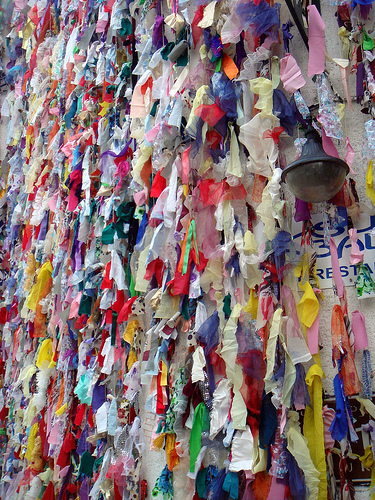Celebrating Spring – Hidrellez
May 5th, 2009Hidrellez, the Turkish spring festival, is celebrated throughout the country.
Along with pagan customs of the Eastern Mediterranean, many pre-Islamic traditions of Central Asia and Mesopotamia live on in Turkey. One holiday in particular, Hidrellez, celebrates spring with colorful and ancient rituals that remain part of modern Turkish culture even if their original significance has been forgotten.

Photo courtesy of Phillip Salzman
Now observed throughout the country on May 6th, Hidrellez is whatever Turkey’s multicultural citizens make of it—a day of prayer, contemplation, mysticism, healing, wish-fulfillment, music and poetry, revelry— or a Turkish version of Earth Day.
A revered figure of Near Eastern folklore, the Muslim saint Hizir (from the Arabic Al-Khidr, meaning The Green One) is believed to appear as a mendicant dervish with a long white beard. Hizir has many attributions, but is generally regarded as someone with the power to grant wishes and intercede to save his supplicants from disasters.
Associated with spring planting and rebirth, Hizir has absorbed some of his character from the ancient water and fertility deities of the Middle East. He is also identified with the Old Testament figure of Elijah (Ilyas in Arabic), who was credited with bringing rain to the region’s arid croplands. This gave rise to the Turkish melding of the two names Khidr and Ilyas – as well as ruz. the Persian word for day, to yield the contemporary Hidrellez.
Hizir is also cloaked in the legends surrounding agrarian and fertility cults of the Balkans. Clad in green leaves, the Green Man of the pagans became Green George among Catholic and Orthodox Christians, who celebrated the feast day of St. George each April 23rd, in the old Julian calendar. Among many mixed communities of the Eastern Mediterranean, distinctions between Hizir and Green George were blurred long ago.
Of particular interest to us, is that Hizir is the patron saint of travelers, protecting them from the dangers and difficulties of the road. Thus, he holds a special place in Turkey, a country criss-crossed by ancient trade routes.

Hizir travels the River of Life upon a fish
Always associated with water, the turbanned Hizir is transported by a fish swimming along the River of Life. Once a year, Hizir may be approached for special favors, provided that one petitions him in an appropriate fashion.
Before daybreak on Hidrellez, (May 6th, according to the modern calendar), many Turks make or depict miniatures of things they most desire—a new house, an automobile, a business of one’s own… They place these images in their gardens or yards, or they may write their wishes on slips of paper and tie them to designated shrubs and trees. Walls bedecked with hundreds of brightly-colored rags and written wishes rise at sites of public celebrations, where gypsy bands and bonfires may also enliven the scene. During the ensuing year, Hizir may, at his sole discretion, grant a wish. If not, there’s always next year…
Here is a contemporary account from a friend of mine,* a Turkish woman in her 30’s living in southwestern Turkey. The notes in brackets are mine.
“May 6th is like an unofficial holiday, especially in towns like Finike, Kumluca, etc. They wake up early in the morning and walk on grass [because it is something living and green], walk over a bridge [to signify Hizir’s connection with water]. My mom still goes out to the beach with her friends…
“Others meet at Hidirlik Tower in Kaleici [in the walled, Ottoman quarter of the port of Antalya] and drop leaves or flower petals into the sea. Also, very early on the morning of the 6th, they write their wishes on papers and walk to the beach and throw those into sea, too.
“In fact, in local traditions, Hidirellez is even more of a spring holiday than May 1st. It’s the awakening of Earth and Nature.
“Easter is about the Resurrection of Christ, but for an Anatolian girl like me, who was born Muslim, but who also believes in the Great Mother Goddess and other pagan goddess figures—and even in some Shamanism—it’s all about the ‘resurrection of nature!’ I always love spring! ”
Thanks to Ceylan Zere for her personal account of Hidrillez.



